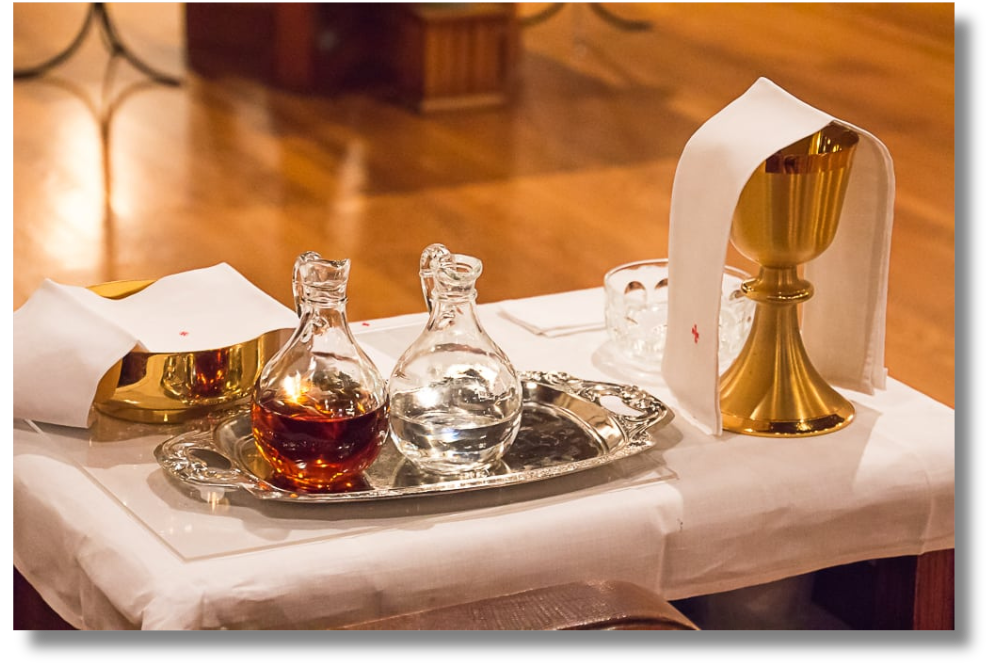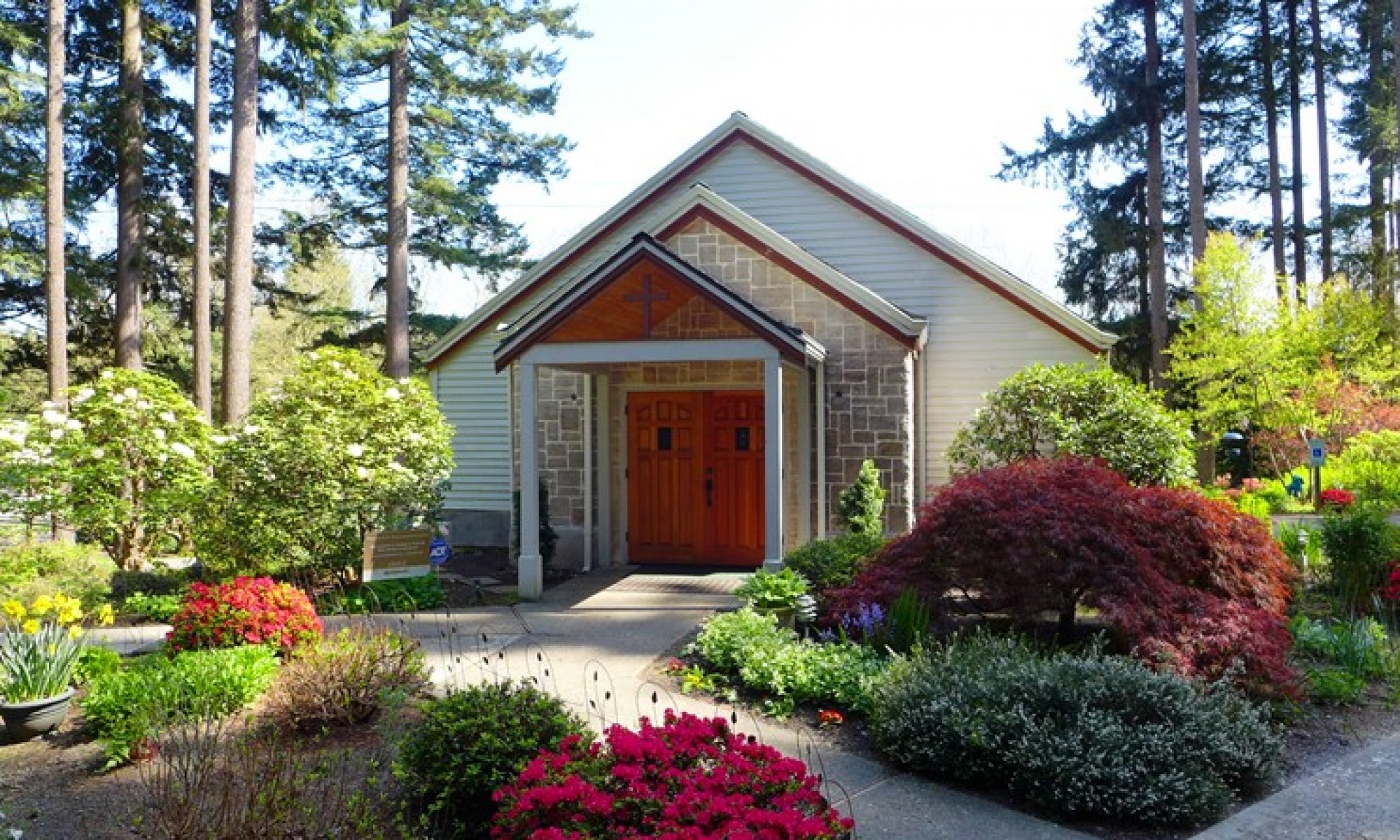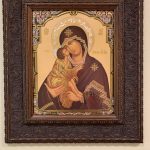
We worship God with all our hearts, our souls, our minds, and our bodies, in the beauty and ordered dignity of Christ-centered service.
(This commentary will take you step-by-step through a typical Anglican Liturgy. We hope you find it helpful.)
Standing at the entrance to the nave, our eyes are drawn to the altar and the tabernacle, for here the Real Presence of Christ is reserved, signified by the lit sanctuary lamp. Just as God humbled himself to enter our world as a helpless infant, He re-enters today as consecrated bread and wine become His body and blood in the Eucharist.
Our altar recalls the first Christian altars when, in the early years of persecution, Christians worshiped in dark catacombs under the city of Rome. On stone slabs over martyrs’ tombs, they celebrated the Eucharist, candles providing the only light. Our candles today remind us of that time, and that the light of Christ could not and will not be extinguished by the darkness.
Many churches have holy water fonts. In making the Sign of the Cross with water from the font we are reminded of our baptism into Christ.
As we walk down the central aisle we recall our journey through life, from the baptismal font (our beginnings) to the tabernacle (our union with Christ).
When entering the pew, we genuflect in the aisle before the Blessed Sacrament, then kneel and offer thanksgiving for the people of the parish, the clergy, and the freedom to worship. This is a time of silent preparation before Mass.
The congregation participates in the Divine Liturgy by following the service in the Book of Common Prayer found in the pews and referring to the Sunday bulletin for the proper lessons for the day. The poetic language of our liturgy dates to the sixteenth century, but the Eucharist itself, instituted by Christ, follows the form of even earlier services. Many prayers and Psalms go back thousands of years.
We make a genuflection when we hear the words, “And was incarnate by the Holy Ghost and was made man” in the Creed, in honor of the Incarnation of Our Lord. We bow our heads when we hear the name of Jesus. We bow in veneration to the cross in procession. We kneel at certain times, incorporating our bodies in the worship of God. Usually we stand to sing, to say the Creed, and to listen to the Gospel reading. We sit during other Scripture readings, the sermon, and the choir anthems. We kneel to pray, showing our humility and gratitude before God.
At the end of the recessional or last hymn we kneel to thank God for his many gifts. At the end of the service, as we leave our pew, we genuflect before the Reserved Sacrament in the tabernacle.
Many churches have a chapel or altar dedicated to the Blessed Virgin Mary where candles may be lit in prayer for her intercession. We do not worship Mary, but ask for her prayers. She is the Theotokos, the God-bearer.
Confessionals are often found in the narthex of our churches. Here we may receive the comfort of absolution and wise counsel.
We follow the Church Year seasons: Advent, Christmas, Epiphany, Lent, Easter, Ascension, Pentecost, and Trinity. The colors of clerical vestments and altar cloths reflect the season and we observe feasts and fasts appropriate to the time. We act out the story of Jesus come among us throughout the year.
We are a sacramental church, believing that God works through matter – in the waters of Holy Baptism, in the bread and wine of the Holy Eucharist. He works through each of us as His Body, the Church.
Should you wish to know more about the Anglican Church or how one becomes an Anglican, we will gladly answer your questions and suggest the way to membership. Speak with Father Rick Gregory, or contact him via email.
We welcome you to worship with us.
Adapted from “Welcome to Our Church: the Anglican Way of Worship,” APCK

